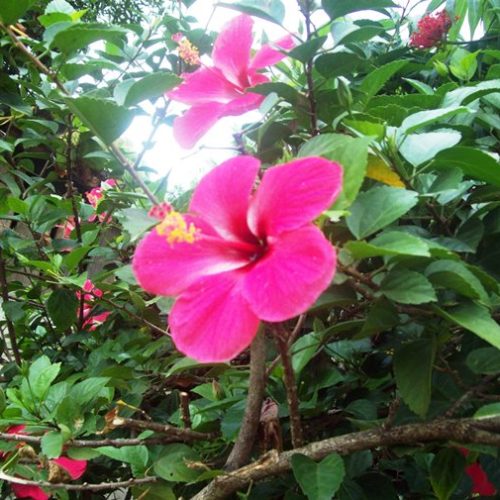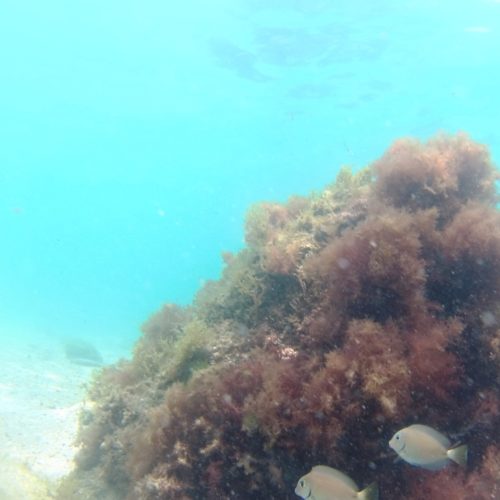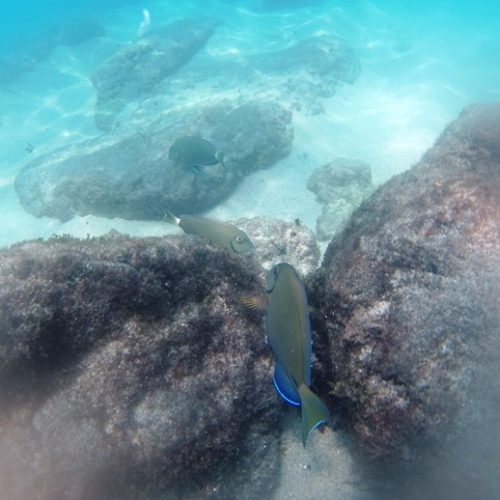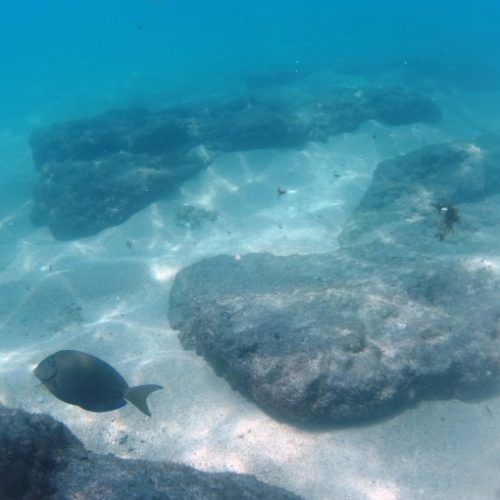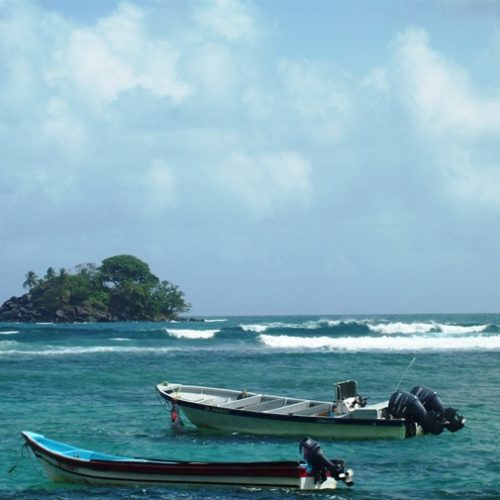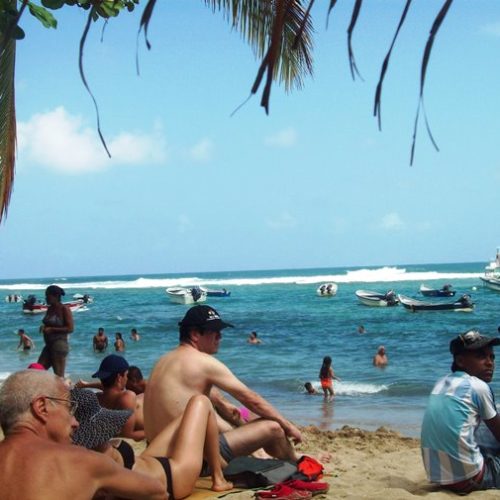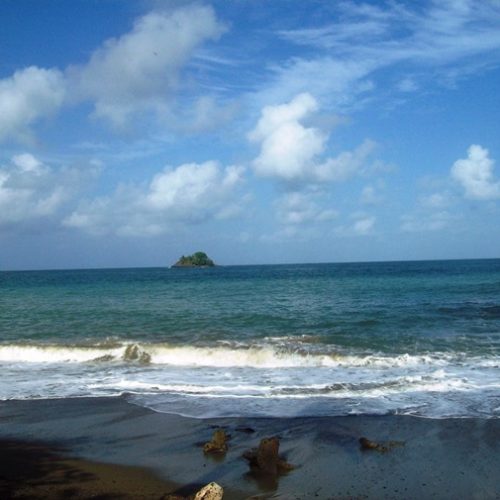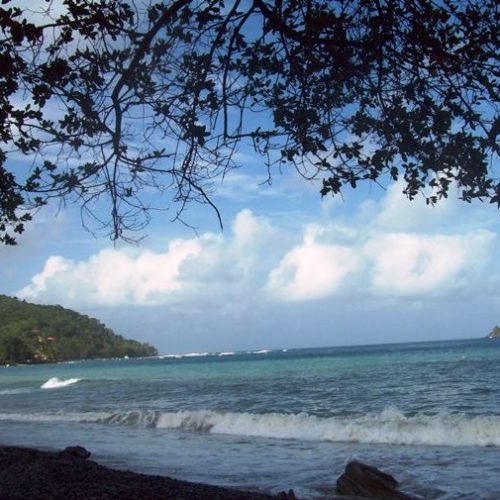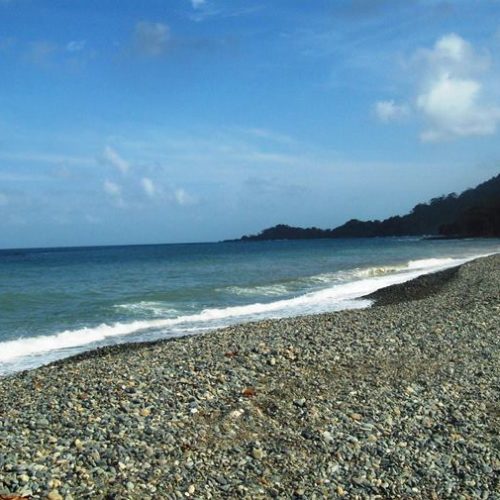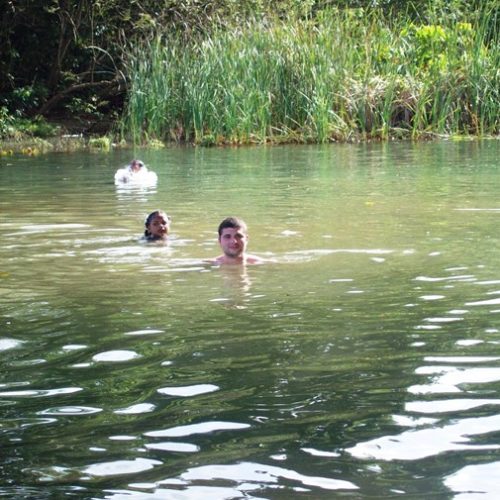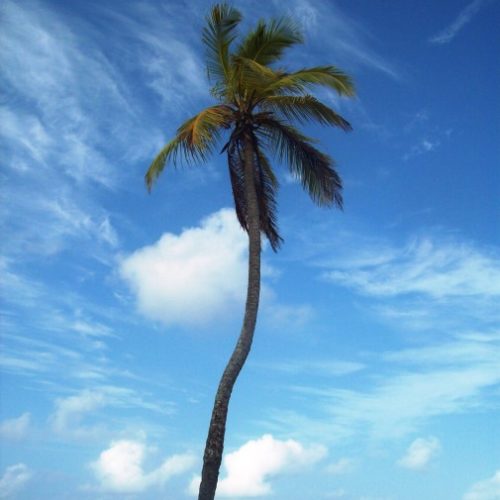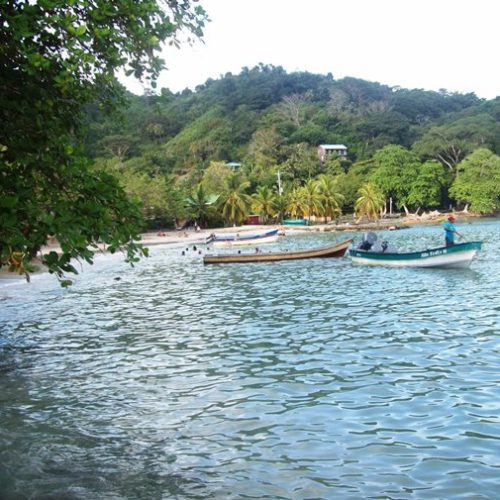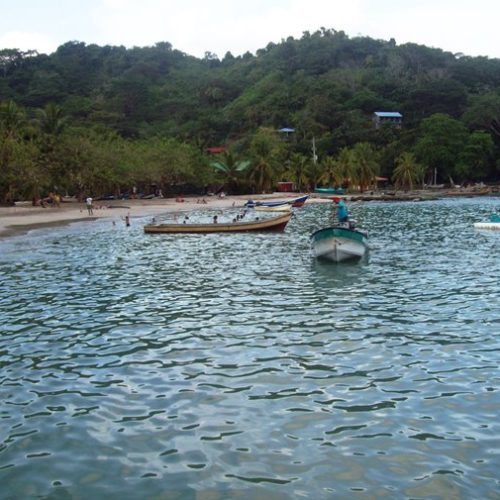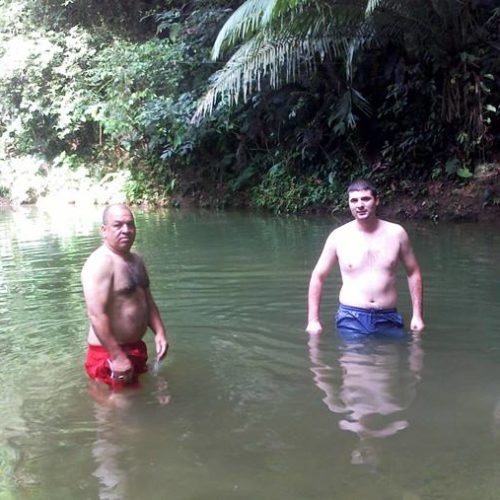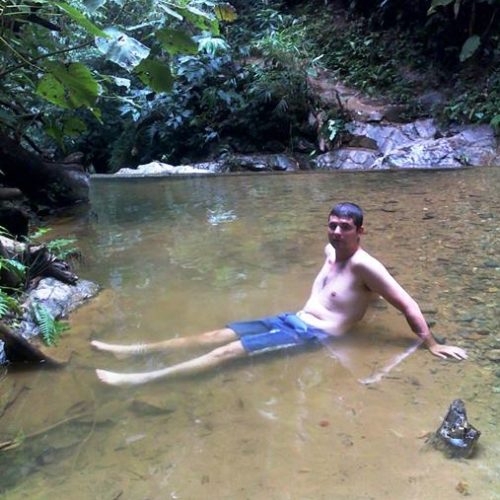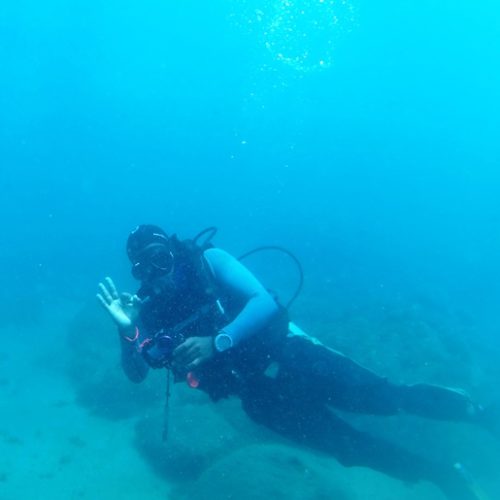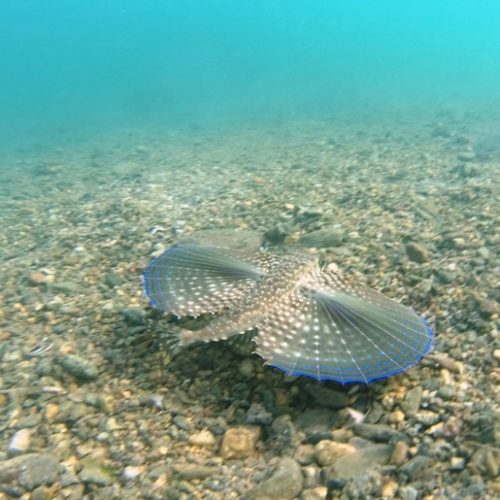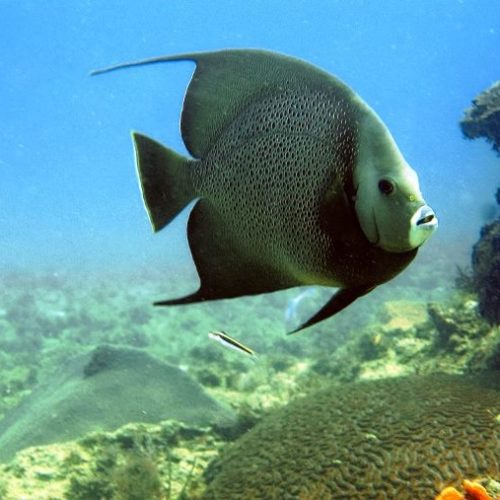Capurgana
Despite everything, Capurgana remains a magical place like a perfect spot to disconnect from the modern world with its pretty beach, its crystalline water of different shades of blue, its palm trees and dense and wild jungle. The big advantage of Capurgana over Trigana is the presence of corals in the sea, which makes snorkelling and diving much more interesting. Several diving schools opened in the last few years in Capurgana, the seabed being rich in corals, multicoloured fish, rays, green turtles and even small sharks… If you like diving, do it here as it is really worth it; and if you are around for at least a week, don’t hesitate to do your certifications PADI or SSI to be able to dive deeper and cheaper in your next sessions. It much cheaper than in France, and practise is usually done at sea, so it is more pleasant. Just a note regarding snorkelling and diving in the Uraba gulf, in dry season (from December to April), there are a lot of waves, stirring the sand and making the water blurry. It is not always the case, but you are better informed and won’t feel as disappointed if it is the case. If you stay several days, there will be days with calmer sea and better visibility. If you go there to enjoy the underwater world, it is best to go from May to November.
Capurgana is accessible in over 2h30 by boat from Turbo; or about 1h40 from Necocli. Regarding the boat, we have to point out that from December to April (dry season), the sea can be really agitated, then you have to favour Necocli rather tan Turbo as a starting point to minimise travelling times by boat. If you suffer from back-pain or sea sickness, you shouldn’t travel at that period, but rather go there beginning of May to November; or spend a bigger amount and go there by plane from Medellin (750000pesos return trip by plane, and 270000pesos by boat). If you want to go to Panama, you will find an immigration office in Capurgana; to go to Miel beach this is not necessary.
If you like the jungle and fresh waters, you can go to the natural reserve of El Cielo, where you will be able to swim in lots of pools and under different waterfalls in the jungle. It takes about 1hr to walk there from the beach; the 1st half hour is not that pleasant, but 2nd one goes through the jungle, crossing the river, and it is a good opportunity to observe monkeys, toucans, and sloths if you are lucky.
If you keep going away from Capurgana alongside the main beach, you will get to La Coquerita, a house perched up in the water and jungle at the same time. In this magical place you will find fitted fresh water pools, and a natural salt water pool with waves, a small bar/restaurant, and lots of hammocks to relax.
We’d like to end up this description of Capurgana with this last paragraph, a bit sadder and less selling, but we think it is necessary to do it…the 1st word coming to our minds now when we think about Capurgana is “nostalgia”. Not because we are against progress, far from that, but because it is neighbour to our little paradise in Trigana, still preserved from mass tourism, and we really don’t want to happen the same thing there. Some say “don’t take the glass half empty but half full, Carpurgana is beautiful still today”, and it is true this village still has its own charm and we still have good times in its turquoise waters at 30 degrees, or in its thick jungle populated by varied wildlife and its numerous rivers… but still… We can’t help but think “it was better before”. Indeed we discovered it back in 2009, we didn’t go back for 9 years, and it was a shock. And if we are telling you that it is in order to make you aware, my tourist friends, that tourism can have a destructive effect if it is not managed properly. The different actors, hosts but clients too and local politics have to make an effort to create long-term tourism protecting places at the same time as developing them.
Back in 2009, the village life revolved around the small boats bringing locals, tourists and all the necessities used on the spot. Visitors were then mainly Colombians, in big majority paisas from Medellin region, and some well informed backpackers. The village was full of people on Saturdays and Sundays, and totally empty during the week. Electricity was only available 8hrs a day, no internet, no cars or motorbikes, only carts pulled by horses; a small mooring jetty, no wast collection point, no slums…
Today it has changed a lot; the tourist flow has drastically increased despite complicated access. On one side we have Colombian tourism: people come for the beach, or to have the opportunity to get out of the country when they go to Miel beach in Panama (indeed, most Colombians have never been overseas or have rare opportunities to go to an other country…and going to Panama is relatively easy to them as they are not asked any papers/visas). And on the other side foreign tourism is still increasing in Colombia: foreigners come for the ideal setting, but also to go to Panama via the beautiful islands of San Blas. And as if that was not enough, lately a new wave of migrants arrived from Africa, Cuba, India, Syria, Bangladesh….as they are allowed to land in the country without presenting any visas…and will then attempt to reach the USA, helped by smugglers, through the Darien jungle (today in 2019, they are estimated to be over 100 migrants arriving per day). Nowadays, electricity is available 20hrs/day, internet is everywhere, there are countless bars, restaurants and hotels, lots of shops, bakeries, nightclubs, a huge pontoon used by over a dozen boats everyday (bigger and bigger boats with capacity of up to 100 people now). “Motocarro” are sorts of motorbikes with 3 wheels (ute style), motorbikes, some small cars and tractors have now replaced the old carts and horses. There is a huge tip in open air; and a slum got built adjacent to the airport, on the way to the natural reserve El Cielo… It was a virgin part of the jungle with huge trees before. They have issues with water; it is strictly rationed…, so big water tanks started to be installed on rooftops. The sewage network is a total disaster; most of the sewage runs down freely without ducts and ends up in the river coming from El Cielo…and eventually into the ocean…

